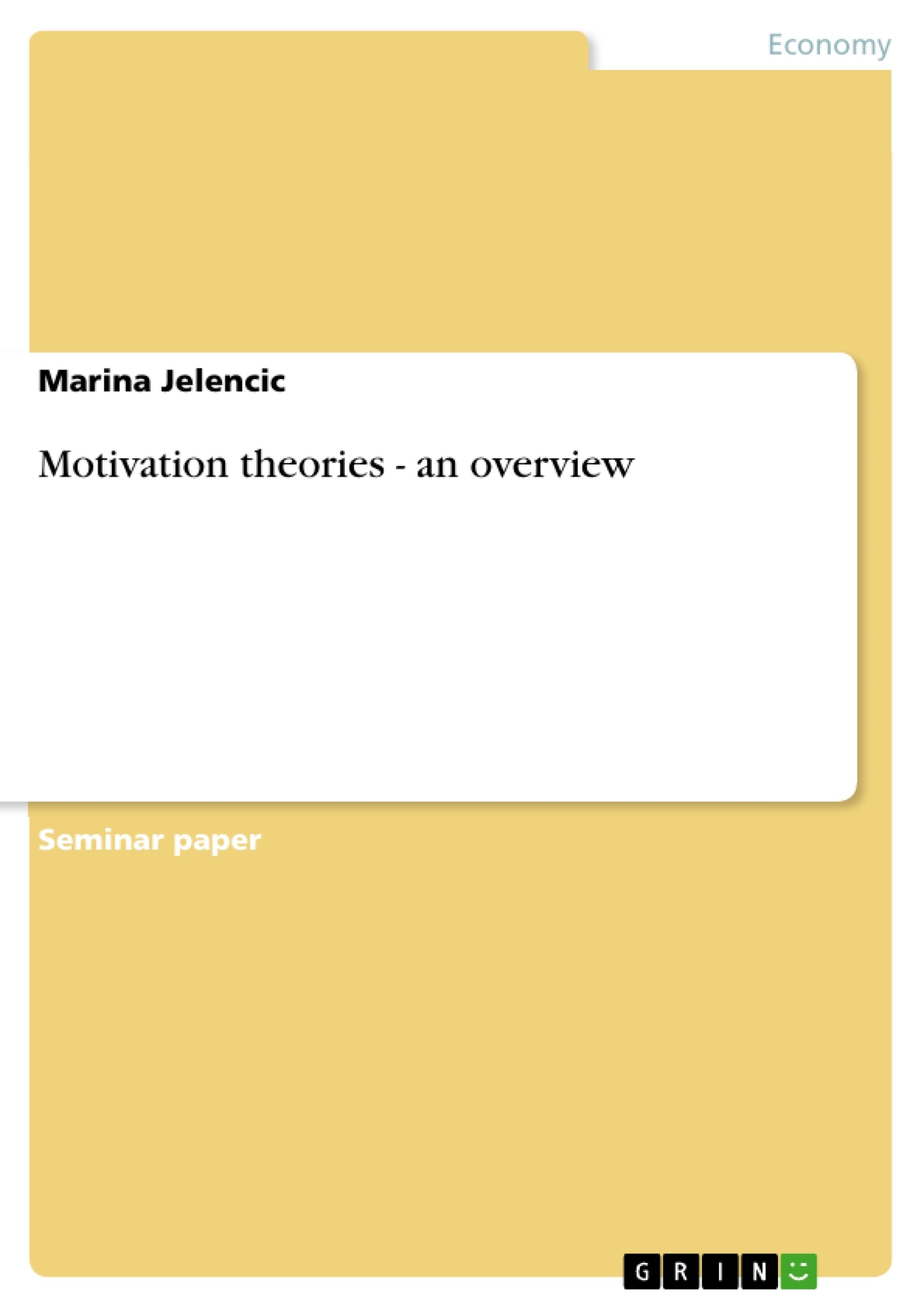In today's economic situation the survival and the success of a company depends not insignificantly on its productivity and innovation capability. The most important source of innovation is every individual employee in the company. High productivity in turn depends not only on modern technology but also on the individual attitude of the employees. Beyond doubt, an employee who is willing to involve himself and who can identify with the objectives of the company is significantly more productive and innovative than one employee who only looks at the clock and awaits the knocking-off time.
Over the past years, the term “motivation” became a central point of discussions about leadership and cooperation. For the one side, motivation is a contemporary motivational technique that eliminates the need for authoritarian leadership, while others disapprove it because they think it is a tool for manipulation or exploitation.
Contents
List of figures
1. Introduction
2. Terms
2.1 Motivation
2.1.1 Intrinsic motivation
2.1.2 Extrinsic motivation
3. Motivation Theories
3.1 Maslow’s hierarchy of needs
3.2 Aldelfer’s ERG- theory
3.3 Herzberg’s two factor theory
3.4 McClelland’s acquired needs theory
4. Conclusion
List of literature
List of internet resources
- Citar trabajo
- Marina Jelencic (Autor), 2010, Motivation theories - an overview, Múnich, GRIN Verlag, https://www.grin.com/document/171355
-

-

-

-
¡Carge sus propios textos! Gane dinero y un iPhone X. -

-
¡Carge sus propios textos! Gane dinero y un iPhone X. -

-
¡Carge sus propios textos! Gane dinero y un iPhone X. -

-
¡Carge sus propios textos! Gane dinero y un iPhone X. -

-
¡Carge sus propios textos! Gane dinero y un iPhone X. -

-
¡Carge sus propios textos! Gane dinero y un iPhone X.

